Most Valuable Lists
**Please note that these values are an estimate and can change at any time. We provide these to as information to support your passion and help you benchmark your collection**
World Coins
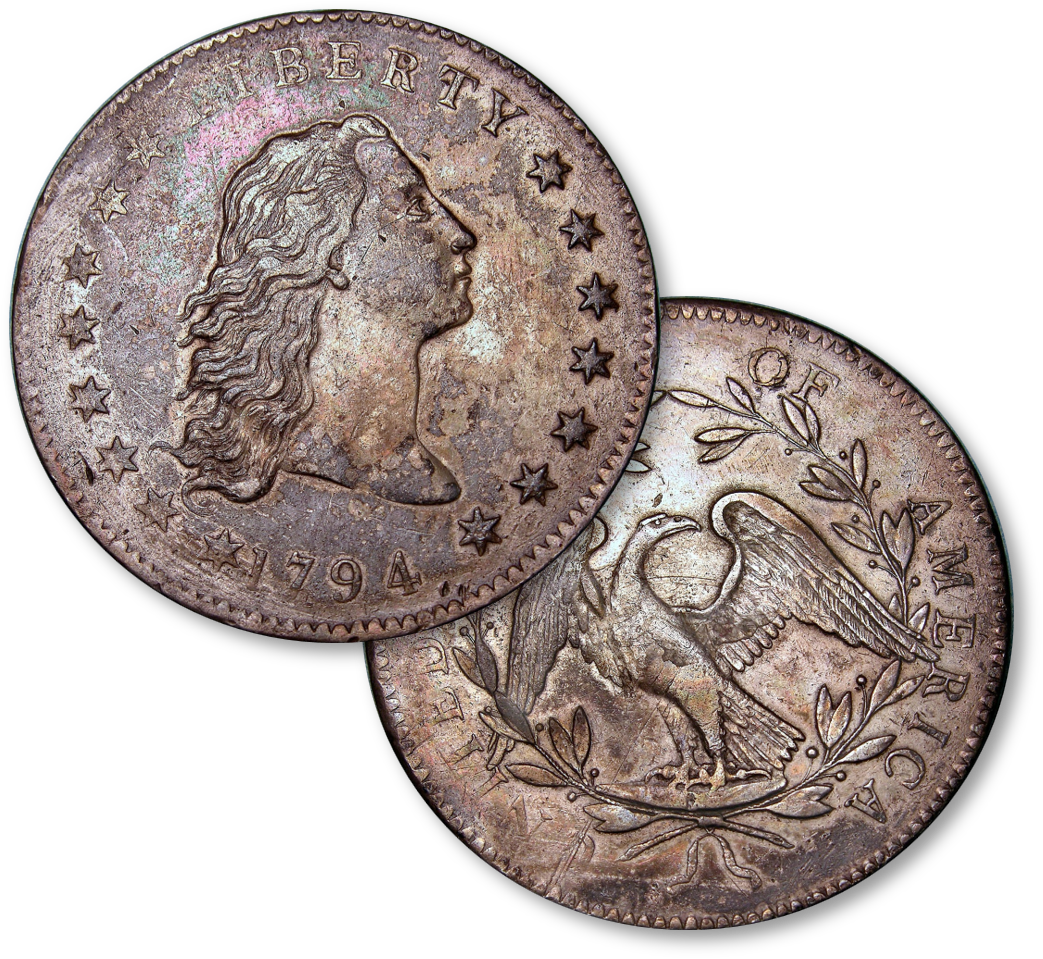
- 1794 Flowing Hair Silver Dollar- One of the earliest US silver dollars, highly sought after by collectors. In uncirculated condition, it can be worth millions of dollars.
- 1933 Double Eagle Gold Coin- While not legally permitted to be owned by private individuals due to government restrictions, some examples have sold at auction for millions of dollars.
- 1804 Draped Bust Silver Dollar- Known as the "King of American Coins," with only 15 known examples. In uncirculated condition, it can be worth millions of dollars.
- 1913 Liberty Head Nickel- Only five examples of this coin are known to exist, making it one of the rarest and most valuable US coins. In uncirculated condition, it can be worth millions of dollars.
- 1343 Edward III Florin- One of the most famous and valuable medieval coins, featuring a portrait of Edward III. It was sold in 2006 for around $6.8 million.
- 1787 Brasher Doubloon EB on Breast- A rare and historically significant early American gold coin, featuring the initials EB punched into the eagle's breast. In uncirculated condition, it can be worth millions of dollars.
- 1804 Bust Dollar Class I- Similar to the 1804 Draped Bust Silver Dollar, the Class I examples are among the rarest and most valuable US coins. In uncirculated condition, it can be worth millions of dollars.
- 1933 Saint-Gaudens Double Eagle Gold Coin- Like the 1933 Double Eagle, the Saint-Gaudens Double Eagle is also subject to legal restrictions on ownership. However, a few examples have sold at auction for millions of dollars.
- 1822 Gold $5 Half Eagle- Only three examples of this coin are known to exist, making it extremely rare and valuable. In uncirculated condition, it can be worth millions of dollars.
- 1797 Draped Bust Half Dime- With a low mintage and high demand, the 1797 Draped Bust Half Dime is extremely rare and valuable. In uncirculated condition, it can be worth hundreds of thousands to millions of dollars.
Please note that the values provided are approximate and can vary significantly based on factors such as condition, provenance, and market demand. Additionally, some coins, like the 1933 Double Eagle and the 1933 Saint-Gaudens Double Eagle, have legal and historical complexities surrounding their ownership and sale.
US Coins
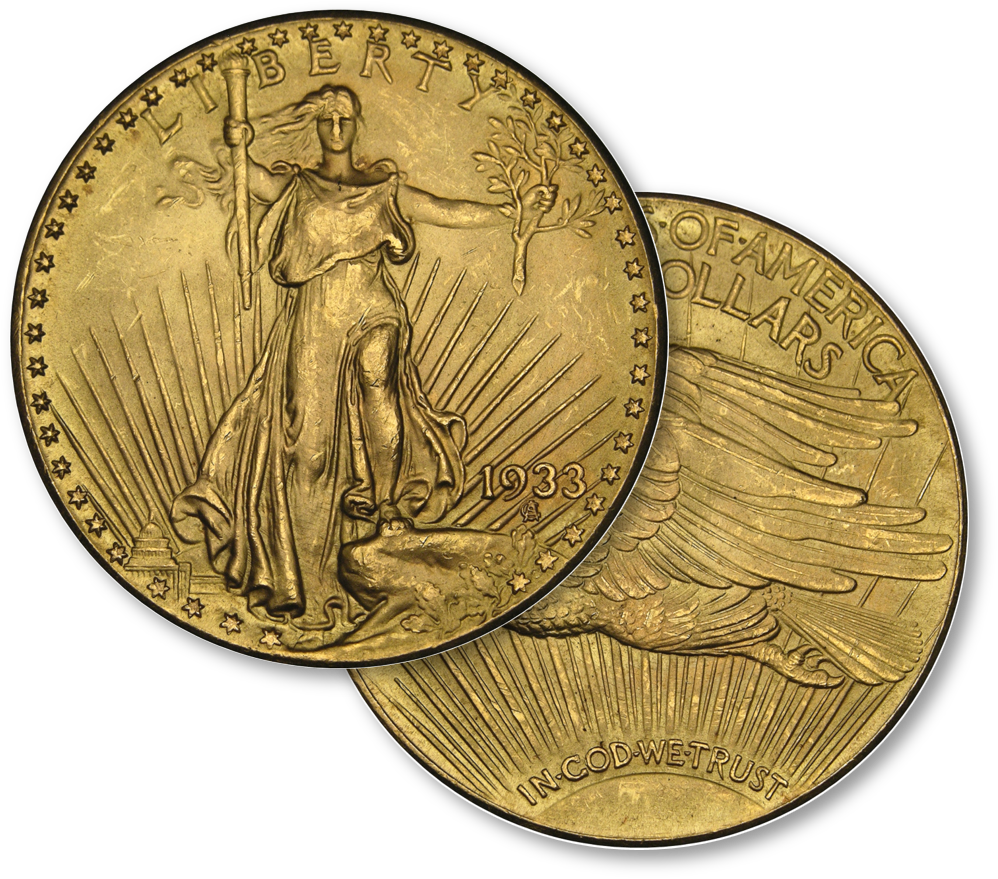
- D1794 Flowing Hair Dollar- The first year of issue for the United States dollar coin, highly sought after by collectors. In uncirculated condition, it can be worth millions of dollars.
- 1933 Double Eagle Gold Coin- Although not technically legal to own due to government restrictions, a few examples have surfaced at auctions, fetching prices in the millions of dollars.
- 1804 Draped Bust Silver Dollar- One of the most famous and valuable US coins, with only 15 known examples. In uncirculated condition, it can be worth millions of dollars.
- 1913 Liberty Head Nickel- Only five examples of this coin are known to exist, making it one of the rarest and most valuable US coins. In uncirculated condition, it can be worth millions of dollars.
- 1796 Draped Bust Quarter- Another early US coin with limited mintage and high demand among collectors. In uncirculated condition, it can be worth hundreds of thousands to millions of dollars.
- 1870-S Seated Liberty Dollar- With a low mintage and high demand, the 1870-S Seated Liberty Dollar is extremely rare and valuable. In uncirculated condition, it can be worth hundreds of thousands to millions of dollars.
- 1913 Liberty Head Quarter Eagle Gold Coin- Only a few examples of this coin are known to exist, making it highly sought after by collectors. In uncirculated condition, it can be worth millions of dollars.
- 1796 Draped Bust Half Dollar- Another early US coin with limited mintage and high demand among collectors. In uncirculated condition, it can be worth hundreds of thousands to millions of dollars.
- 1797 Draped Bust Half Dime- With a low mintage and high demand, the 1797 Draped Bust Half Dime is extremely rare and valuable. In uncirculated condition, it can be worth hundreds of thousands to millions of dollars.
- 1943 Copper Lincoln Cent- While most 1943 Lincoln cents were struck in zinc-coated steel to conserve copper for the war effort, a few were mistakenly struck in copper. These are extremely rare and can be worth hundreds of thousands to millions of dollars.
Please note that the values provided are approximate and can vary significantly based on factors such as condition, provenance, and market demand. It's always recommended to consult with a professional numismatist or coin dealer for a precise valuation of specific coins. Additionally, some coins, like the 1933 Double Eagle, have legal and historical complexities surrounding their ownership and sale.
Pennies/Cents
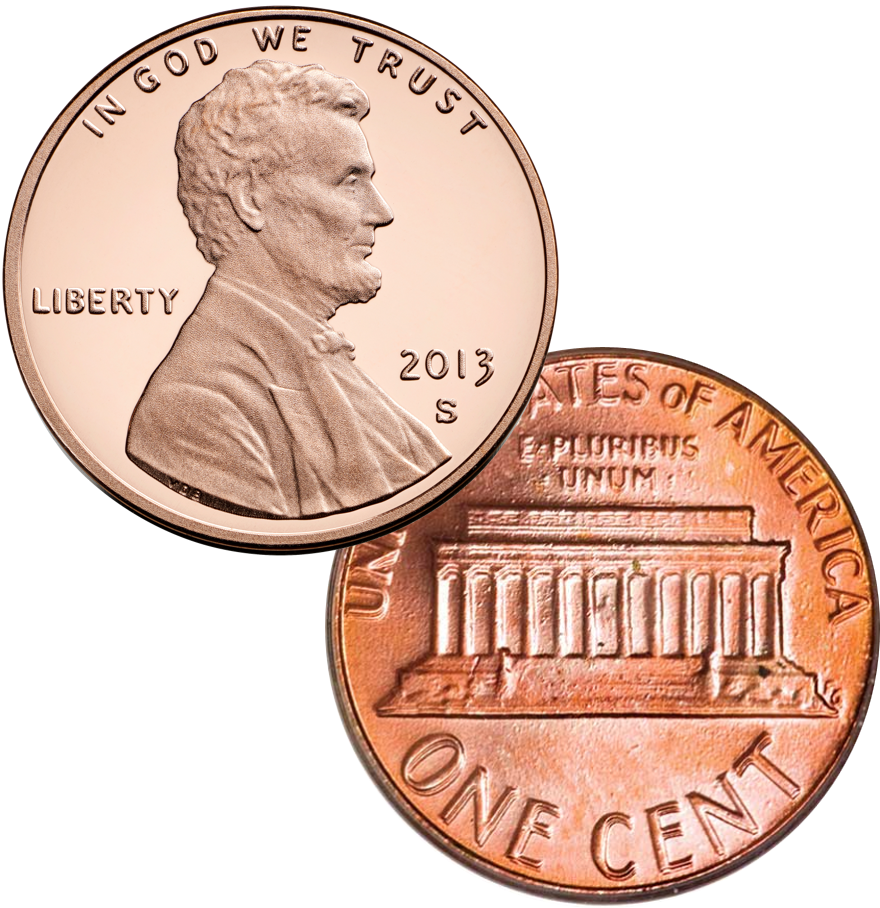
- 1793 Chain Cent- The first large cent issued by the United States Mint, with a chain design on the reverse. In good condition, it can be worth hundreds of thousands to millions of dollars.
- 1793 Flowing Hair Large Cent- Another early issue with a flowing hair design on the obverse. Values can range from tens of thousands to hundreds of thousands of dollars depending on condition.
- 1943 Bronze Lincoln Cent- During World War II, some Lincoln cents were mistakenly struck in bronze instead of zinc-coated steel. These error coins are extremely rare and can be worth hundreds of thousands to millions of dollars.
- 1909-S VDB Lincoln Cent- The 1909-S VDB Lincoln cent is highly sought after by collectors due to its low mintage and the inclusion of the designer's initials (VDB) on the reverse. In uncirculated condition, it can be worth thousands of dollars.
- 1877 Indian Head Cent- The 1877 Indian Head cent is considered a key date in the series, with a low mintage and high demand among collectors. Values can range from hundreds to thousands of dollars depending on condition.
- 1909-S Indian Head Cent- The 1909-S Indian Head cent is another key date in the series, as it was the last year of issue for the Indian Head cent and has a low mintage. Values can range from hundreds to thousands of dollars.
- 1799 Draped Bust Large Cent- Minted in the late 18th century, the 1799 Draped Bust large cent is rare and highly sought after by collectors. Values can range from thousands to tens of thousands of dollars depending on condition.
- 1856 Flying Eagle Cent- The 1856 Flying Eagle cent is the first year of issue for this design and is highly collectible. Values can range from hundreds to thousands of dollars depending on condition.
- 1944-D/S Lincoln Cent- Some 1944-D Lincoln cents were struck over previously minted 1944-S cents, creating a variety known as the 1944-D/S. These error coins are rare and can be worth hundreds to thousands of dollars.
- 1795 Liberty Cap Cent- Minted in the late 18th century, the 1795 Liberty Cap cent is rare and highly sought after by collectors. Values can range from thousands to tens of thousands of dollars depending on condition.
Jefferson Nickel
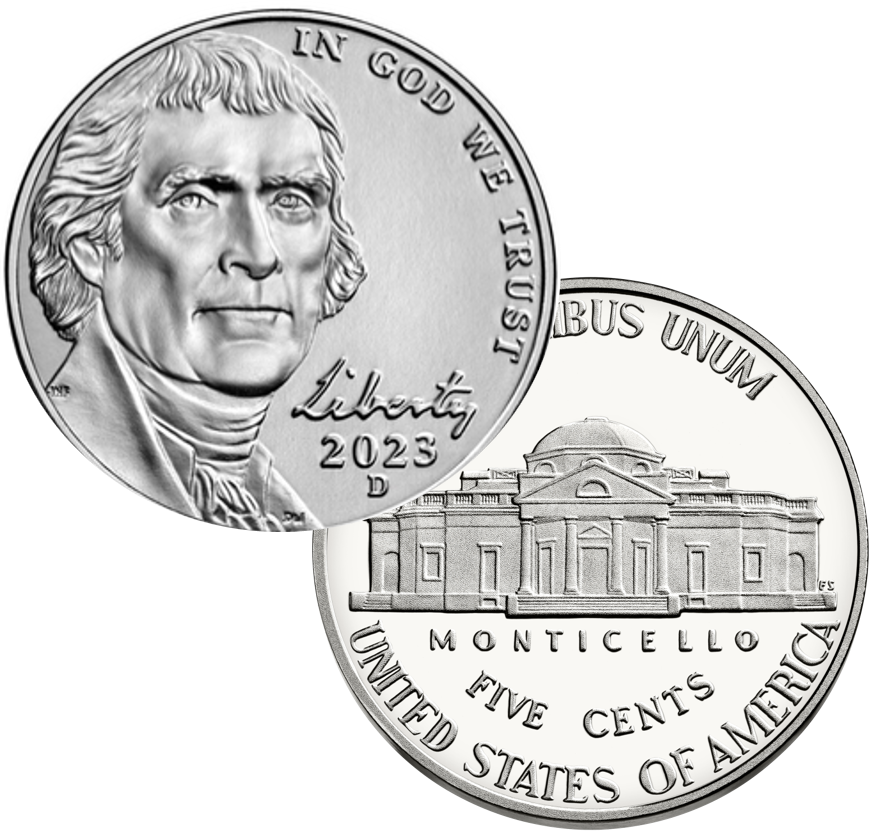
- 1939-D Jefferson Nickel- This is the first year of the Jefferson nickel series and is highly sought after by collectors. In uncirculated condition, it can be worth around $50 or more.
- 1950-D Jefferson Nickel- With a low mintage and high demand, the 1950-D Jefferson nickel is a key date in the series. In uncirculated condition, it can be worth around $50 or more.
- 1938-D Jefferson Nickel (Full Steps)- Full Steps coins are those with distinct, complete steps on Monticello on the reverse. The 1938-D is particularly rare in this condition and can be worth hundreds or even thousands of dollars depending on its grade.
- 1942/41 Jefferson Nickel (Overdate)- This variety is the result of a 1942 die being impressed over a 1941 die. It's a rare error coin and can be worth hundreds to thousands of dollars depending on its condition.
- 1943/2-P Jefferson Nickel (Overdate)- Another overdate variety, this one features a 1943 die struck over a 1942 one. It's highly sought after by collectors and can be worth hundreds to thousands of dollars in uncirculated condition.
- 1954-S Jefferson Nickel (Full Steps)- Like the 1938-D, the 1954-S is rare in Full Steps condition. It can be worth hundreds of dollars or more in uncirculated condition.
- 1955 Jefferson Nickel (Doubled Die)- The 1955 Jefferson nickel has a notable doubled die error on the obverse. In uncirculated condition, it can be worth around $50 or more.
- 1954-S Jefferson Nickel (S Mint Mark)- Although more common than the Full Steps variety, the 1954-S with an S mint mark is still highly collectible. In uncirculated condition, it can be worth around $20 or more.
- 2005-P Jefferson Nickel (Speared Bison)- This variety features a die gouge resembling a spear point on the bison's back. It's a popular variety among collectors and can be worth around $10 or more in uncirculated condition.
- 1939-D Jefferson Nickel (Reverse of 1940)- Some 1939-D nickels were struck with a reverse die intended for the 1940 coinage. This variety is rare and can be worth hundreds of dollars or more depending on condition.
Roosevelt Dimes

- 1949-S Roosevelt Dime- The 1949-S Roosevelt Dime is the key date of the series with a low mintage. In uncirculated condition, it can be worth around $100 or more.
- 1950-D Roosevelt Dime- The 1950-D Roosevelt Dime is another key date with a relatively low mintage. In uncirculated condition, it can be worth around $20 or more.
- 1968-S Roosevelt Dime (No S Mint Mark)- Some 1968-S Roosevelt dimes were mistakenly struck without a mint mark. These error coins are rare and can be worth hundreds or even thousands of dollars depending on condition.
- 1975 Roosevelt Dime (No Mint Mark)- Similar to the 1968-S error, some 1975 Roosevelt dimes were also struck without a mint mark. These are rare and can be worth hundreds of dollars or more in uncirculated condition.
- 1982-P Roosevelt Dime (No Mint Mark)- In 1982, the Philadelphia Mint accidentally omitted the "P" mint mark on some Roosevelt dimes. These are rare and can be worth around $50 or more in uncirculated condition.
- 1996-W Roosevelt Dime (West Point Mint)- The 1996-W Roosevelt Dime was issued only in mint sets to commemorate the 50th anniversary of the series. It's relatively scarce and can be worth around $10 or more in uncirculated condition.
- 1982 No P Roosevelt Dime- Some 1982 Roosevelt dimes were minted without a mint mark due to a minting error. These are rare and can be worth around $50 or more in uncirculated condition.
- 1983 No Mint Mark Roosevelt Dime- Another minting error, some 1983 Roosevelt dimes were struck without a mint mark. They can be worth around $10 or more in uncirculated condition.
- 1996-W Roosevelt Dime (Full Bands)- Like the 1996-W without full bands, this variety also came from mint sets and is relatively rare. It can be worth around $10 or more in uncirculated condition.
- 1996-D Roosevelt Dime (Full Bands)- Some 1996-D Roosevelt dimes exhibit full bands on the torch, indicating a strong strike. These are relatively scarce and can be worth around $10 or more in uncirculated condition.
Dimes
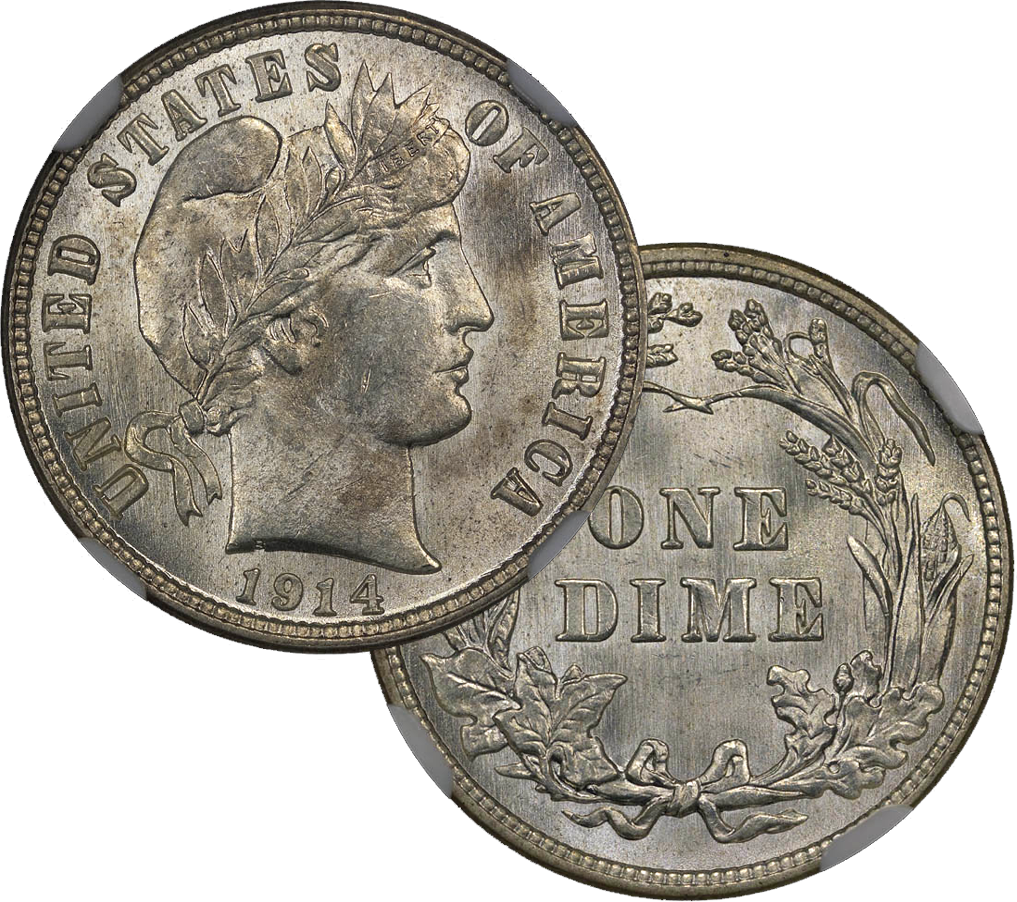
- 1894-S Barber Dime- With a mintage of only 24 pieces, the 1894-S Barber Dime is one of the rarest and most valuable dimes. In good condition, it can be worth hundreds of thousands to millions of dollars.
- 1916-D Mercury Dime- The 1916-D Mercury Dime is a key date in the series, with a low mintage and high demand among collectors. In uncirculated condition, it can be worth thousands of dollars.
- 1921-D Mercury Dime- Another key date in the Mercury Dime series, the 1921-D dime has a low mintage and is highly sought after by collectors. Values can range from hundreds to thousands of dollars depending on condition.
- 1874-CC Seated Liberty Dime- Minted in Carson City, Nevada, the 1874-CC Seated Liberty Dime is rare and highly collectible. Values can range from thousands to tens of thousands of dollars depending on condition.
- 1871-CC Seated Liberty Dime- Another Carson City issue, the 1871-CC Seated Liberty Dime is scarce and sought after by collectors. Values can range from thousands to tens of thousands of dollars depending on condition.
- 1796 Draped Bust Dime- Minted in the late 18th century, the 1796 Draped Bust Dime is rare and highly collectible. Values can range from tens of thousands to hundreds of thousands of dollars depending on condition.
- 1797 Draped Bust Dime- Another early issue, the 1797 Draped Bust Dime is rare and sought after by collectors. Values can range from tens of thousands to hundreds of thousands of dollars depending on condition.
- 1916 Standing Liberty Quarter- The first year of issue for the Standing Liberty Quarter, some were struck as dimes before the design was modified to include more protective features around Miss Liberty's exposed breast. Values can range from hundreds to thousands of dollars depending on condition.
- 1798 Draped Bust Dime- Minted in the late 18th century, the 1798 Draped Bust Dime is rare and highly collectible. Values can range from tens of thousands to hundreds of thousands of dollars depending on condition.
- 1838-O Capped Bust Dime- Minted in New Orleans, the 1838-O Capped Bust Dime is rare and sought after by collectors. Values can range from thousands to tens of thousands of dollars depending on condition.
Washington Quarter
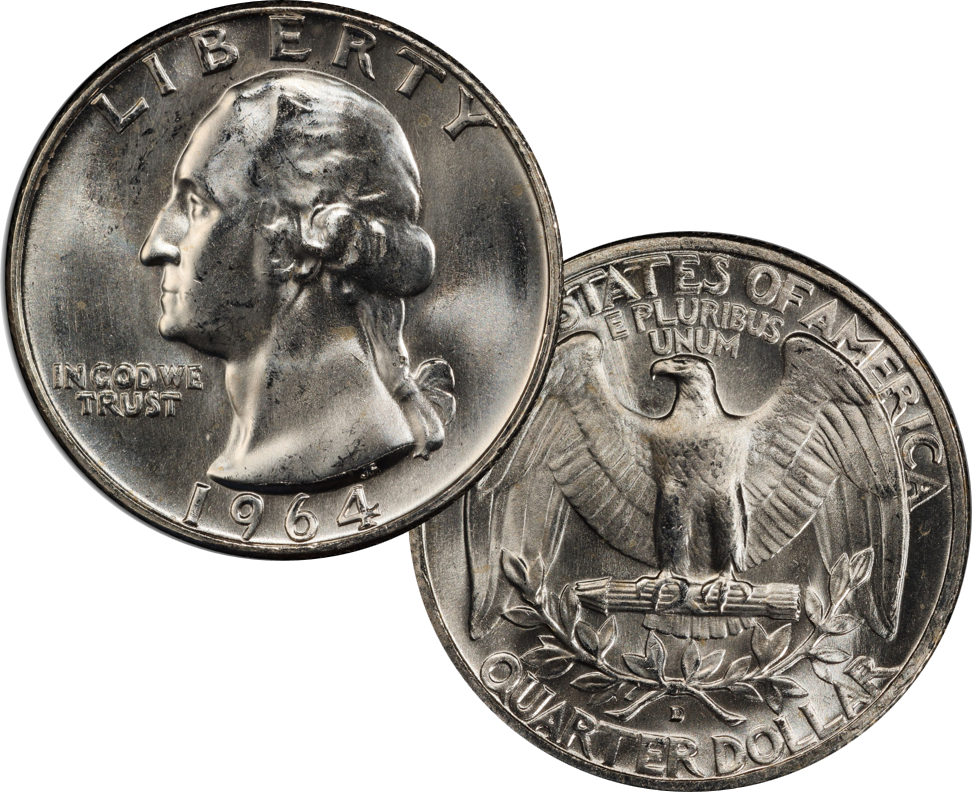
- 1932-S Washington Quarter- This coin is highly sought after due to its low mintage and condition rarity. In uncirculated condition, it can be worth thousands of dollars, potentially ranging from $2,000 to $10,000 or more depending on its grade.
- 1932-D Washington Quarter- Similar to the 1932-S, the 1932-D Washington Quarter is valuable because of its low mintage. Its value in uncirculated condition can range from $1,000 to $5,000 or more.
- 1932 Washington Quarter (no mint mark)- The first year of issue for the Washington Quarter, and any in uncirculated condition can fetch prices upwards of $500 to $2,000, depending on condition.
- 1943-S Washington Quarter- In uncirculated condition, this coin can be worth anywhere from $200 to $1,000 or more, again depending on its condition.
- 1950-D Washington Quarter- While more recent than the earlier dates, the 1950-D has become valuable due to its lower mintage. Its value in uncirculated condition can range from $100 to $500 or more.
- 1970-S Washington Quarter (Proof)- This coin was not intended for circulation and was produced as a proof coin. In pristine condition, it can be worth $50 to $200 or more.
- 1982-D Washington Quarter (No Mint Mark)- Although relatively modern, an error in which some 1982-D quarters were minted without a mint mark makes this coin valuable. Depending on its condition, it can fetch anywhere from $50 to $200 or more.
- 2004-D Wisconsin Extra Leaf Low Quarter- An error in the design of some Wisconsin state quarters in 2004, where an extra leaf appears on the left side of the ear of corn on the reverse, makes this coin sought after. It can be worth $50 to $300 or more, depending on condition and demand.
- 2005-P Kansas Die Break "In God We Rust" Quarter- Another error coin, this time from the Kansas state quarter series in 2005, where a die break causes the motto "In God We Trust" to read "In God We Rust." Its value can range from $50 to $200 or more depending on condition.
- 2007-W George Washington Dollar (Missing Edge Lettering)- An error in which some of the George Washington Presidential dollars minted in 2007 at the West Point Mint were missing the edge lettering. These coins can be worth $50 to $200 or more in uncirculated condition.
Kennedy Half Dollar
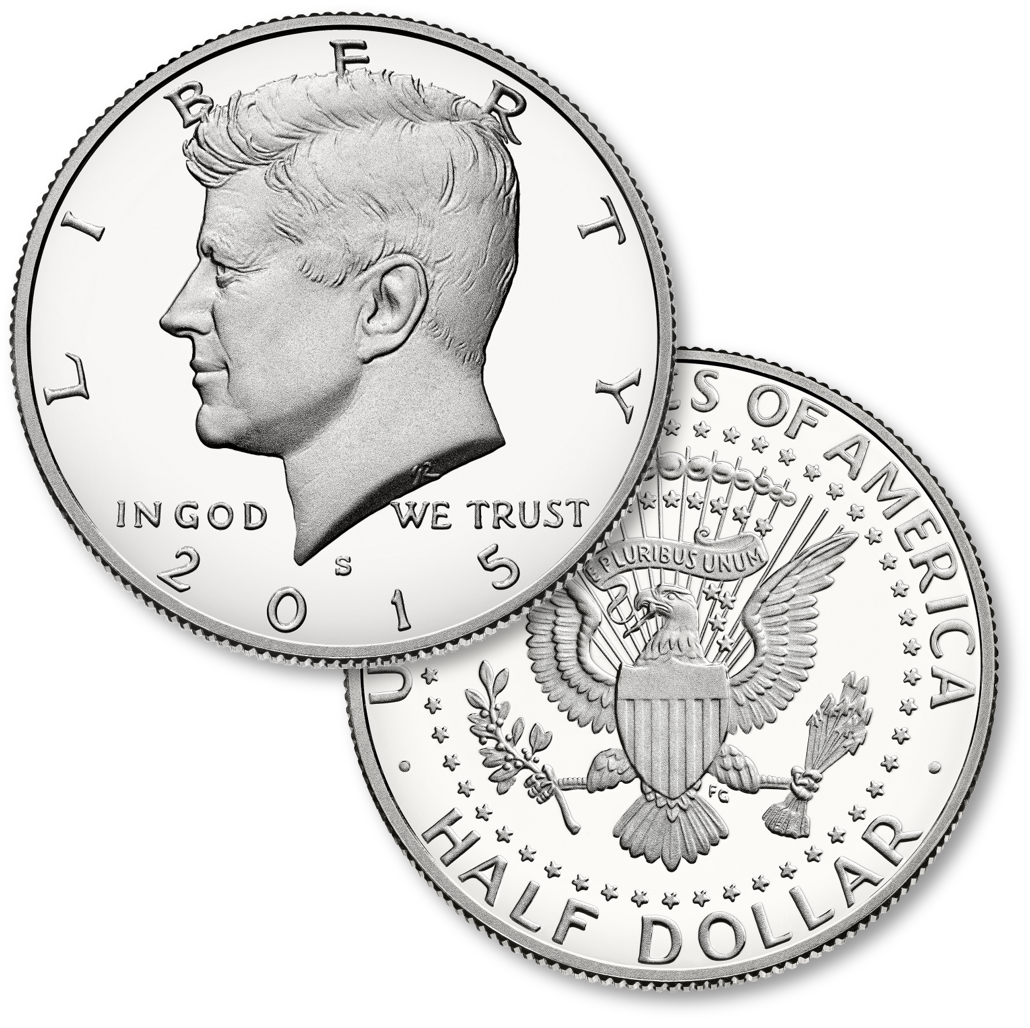
- 1964 Proof Kennedy Half Dollar- Minted in 90% silver for special Proof sets, these coins are valued for their silver content as well as their collectibility. In Proof-70 condition, they can be worth hundreds to thousands of dollars.
- 1970-D Kennedy Half Dollar with Doubled Die Obverse (DDO)- This variety exhibits doubling of the date and other elements on the obverse of the coin. In uncirculated condition, it can be worth hundreds to thousands of dollars.
- 1966 SMS (Special Mint Set) Kennedy Half Dollar- These coins were produced with special dies and planchets for inclusion in Special Mint Sets. In uncirculated condition, they can be worth tens to hundreds of dollars.
- 1974-D Doubled Die Obverse (DDO) Kennedy Half Dollar- Another variety with doubling on the obverse, these coins can be worth hundreds to thousands of dollars in uncirculated condition.
- 1965 Special Mint Set (SMS) Kennedy Half Dollar- Similar to the 1966 SMS issue, these coins were produced with special dies and planchets. In uncirculated condition, they can be worth tens to hundreds of dollars.
- 1968-D No FG (Missing Designer's Initials) Kennedy Half Dollar- Some 1968-D Kennedy half dollars were struck without the designer's initials (FG) on the reverse. In uncirculated condition, they can be worth hundreds to thousands of dollars.
- 1971-D Doubled Die Obverse (DDO) Kennedy Half Dollar- Another variety with doubling on the obverse, these coins can be worth hundreds to thousands of dollars in uncirculated condition.
- 1964-D Kennedy Half Dollar- While not as valuable as their 90% silver counterparts, 1964-D Kennedy half dollars are still sought after by collectors. In uncirculated condition, they can be worth tens to hundreds of dollars.
- 1969-S Proof Kennedy Half Dollar with Doubled Die Obverse (DDO)- This variety exhibits doubling on the obverse of the coin. In Proof-70 condition, they can be worth hundreds to thousands of dollars.
- 1982-P No FG (Missing Designer's Initials) Kennedy Half Dollar- Similar to the 1968-D variety, some 1982-P Kennedy half dollars were struck without the designer's initials (FG) on the reverse. In uncirculated condition, they can be worth hundreds to thousands of dollars.
Morgan Silver Dollar

- 1893-S Morgan Silver Dollar- The 1893-S Morgan Dollar is the king of the series, with a low mintage and high demand among collectors. In uncirculated condition, it can be worth hundreds of thousands to millions of dollars.
- 1889-CC Morgan Silver Dollar- Minted in Carson City, Nevada, the 1889-CC Morgan Dollar is highly sought after by collectors. In uncirculated condition, it can be worth tens of thousands to hundreds of thousands of dollars.
- 1895 Morgan Silver Dollar- The 1895 Morgan Dollar is one of the most famous key dates in the series. No coins were officially minted for circulation, but a few were struck for collectors. In uncirculated condition, it can be worth hundreds of thousands to millions of dollars.
- 1893-O Morgan Silver Dollar- The 1893-O Morgan Dollar is another key date in the series, with a low mintage and high demand among collectors. In uncirculated condition, it can be worth tens of thousands to hundreds of thousands of dollars.
- 1892-S Morgan Silver Dollar- The 1892-S Morgan Dollar is highly sought after by collectors due to its low mintage. In uncirculated condition, it can be worth tens of thousands to hundreds of thousands of dollars.
- 1884-S Morgan Silver Dollar- The 1884-S Morgan Dollar is a conditional rarity, meaning it is scarce in high grades. In uncirculated condition, it can be worth thousands to tens of thousands of dollars.
- 1886-O Morgan Silver Dollar- The 1886-O Morgan Dollar is another conditional rarity, with few examples surviving in uncirculated condition. In uncirculated condition, it can be worth thousands to tens of thousands of dollars.
- 1892-CC Morgan Silver Dollar- Minted in Carson City, Nevada, the 1892-CC Morgan Dollar is highly collectible. In uncirculated condition, it can be worth tens of thousands to hundreds of thousands of dollars.
- 1885-CC Morgan Silver Dollar- Another Carson City issue, the 1885-CC Morgan Dollar is sought after by collectors. In uncirculated condition, it can be worth thousands to tens of thousands of dollars.
- 1879-CC Morgan Silver Dollar- The first year of issue for the Morgan Dollar in Carson City, the 1879-CC is highly collectible. In uncirculated condition, it can be worth thousands to tens of thousands of dollars.
All Rights Reserved | CoinCollecting.com

